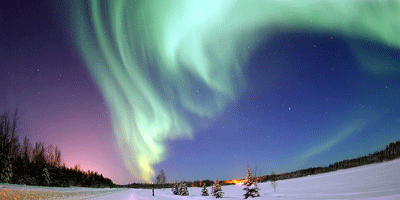Watch Those Cavities
Earth’s aurora is a complex and beautiful display of space plasma physics, but one still in need of a full explanation of mechanisms that cause it. This shimmering light show arises as charged particles from the solar wind are channeled by the terrestrial magnetic field and hit oxygen and nitrogen atoms high in the atmosphere at the poles. As the energetic ions and electrons slam into the magnetic fields and the atmosphere, a rich soup of particle-wave interactions boils up. Writing in Physical Review Letters, Brett Isham of Interamerican University of Puerto Rico, Bayamon, and colleagues identify a source of wave-driven auroral turbulence that has been observed under artificial conditions but never seen in natural settings.
In the auroral plasma, one form of turbulence consists of collective electron waves called Langmuir modes that can be trapped in cavitons—local bubbles of low plasma density. Cavitons have been artificially produced by sending powerful radio pulses into the ionosphere while looking for frequency modes of excited waves in backscattered radio signals. Isham et al. have analyzed data taken in previous experiments probing the ionosphere and find naturally occurring electron Langmuir waves that, in turn, drive oscillations of the plasma ions, and together these produce cavitons. The researchers then match these plasma oscillation signals against numerical calculations to show how the Langmuir modes cascade into caviton turbulence. Their findings answer long-standing questions about processes that shape auroral phenomena, as well as illuminate mechanisms behind turbulence in general. – David Voss





